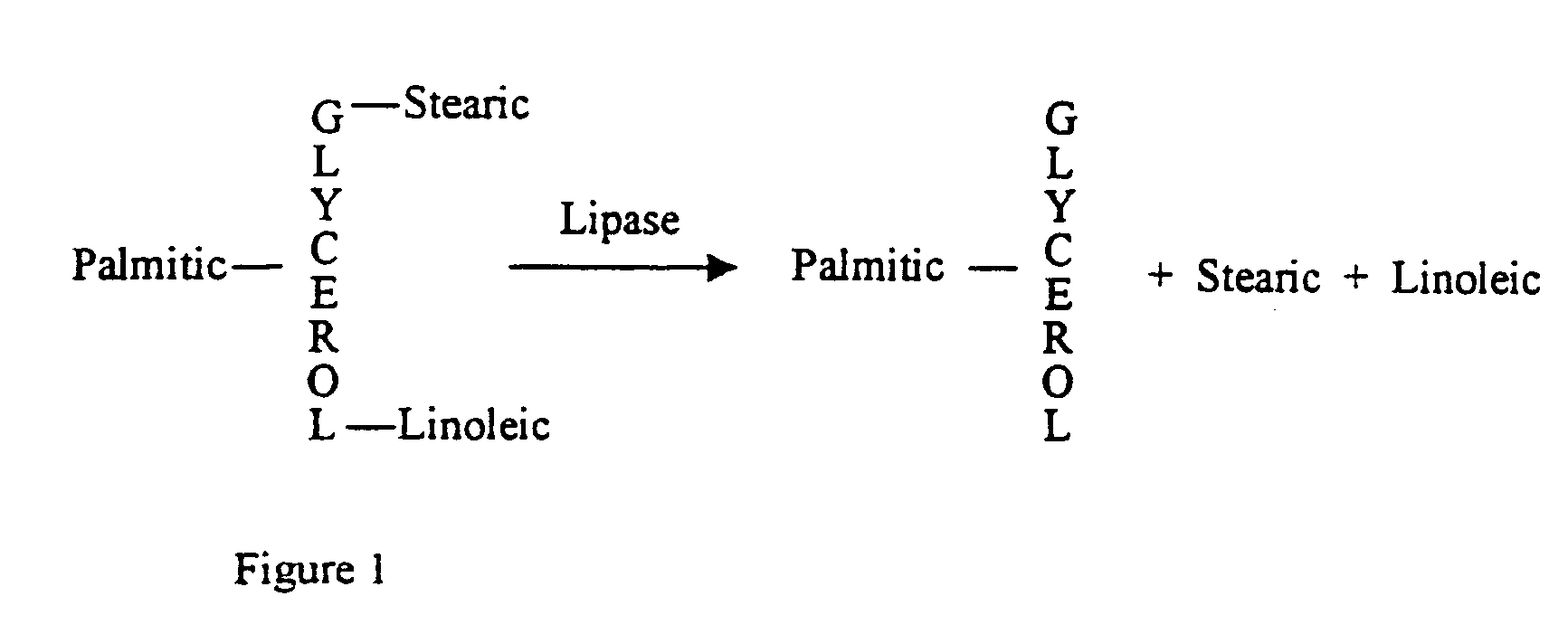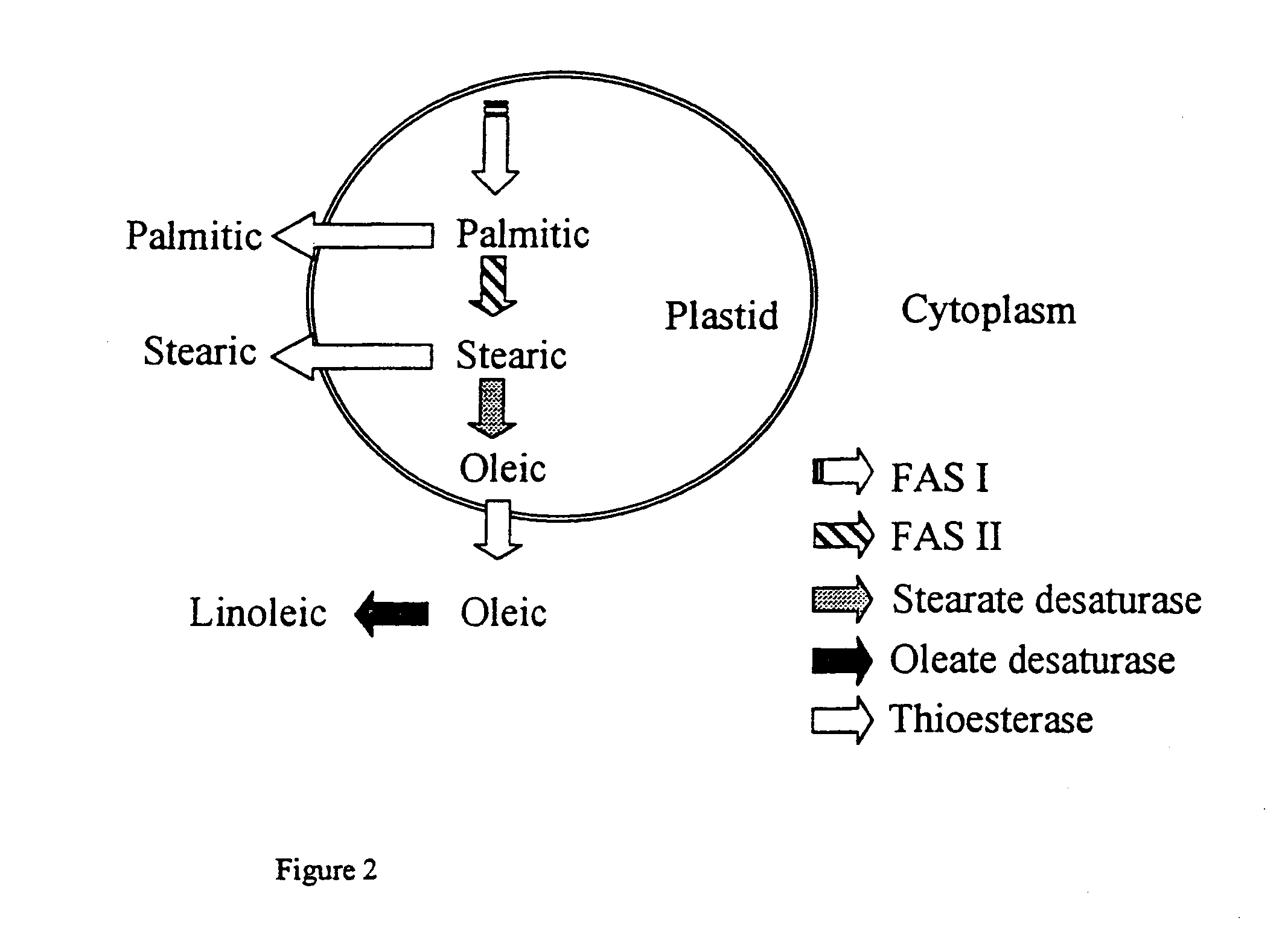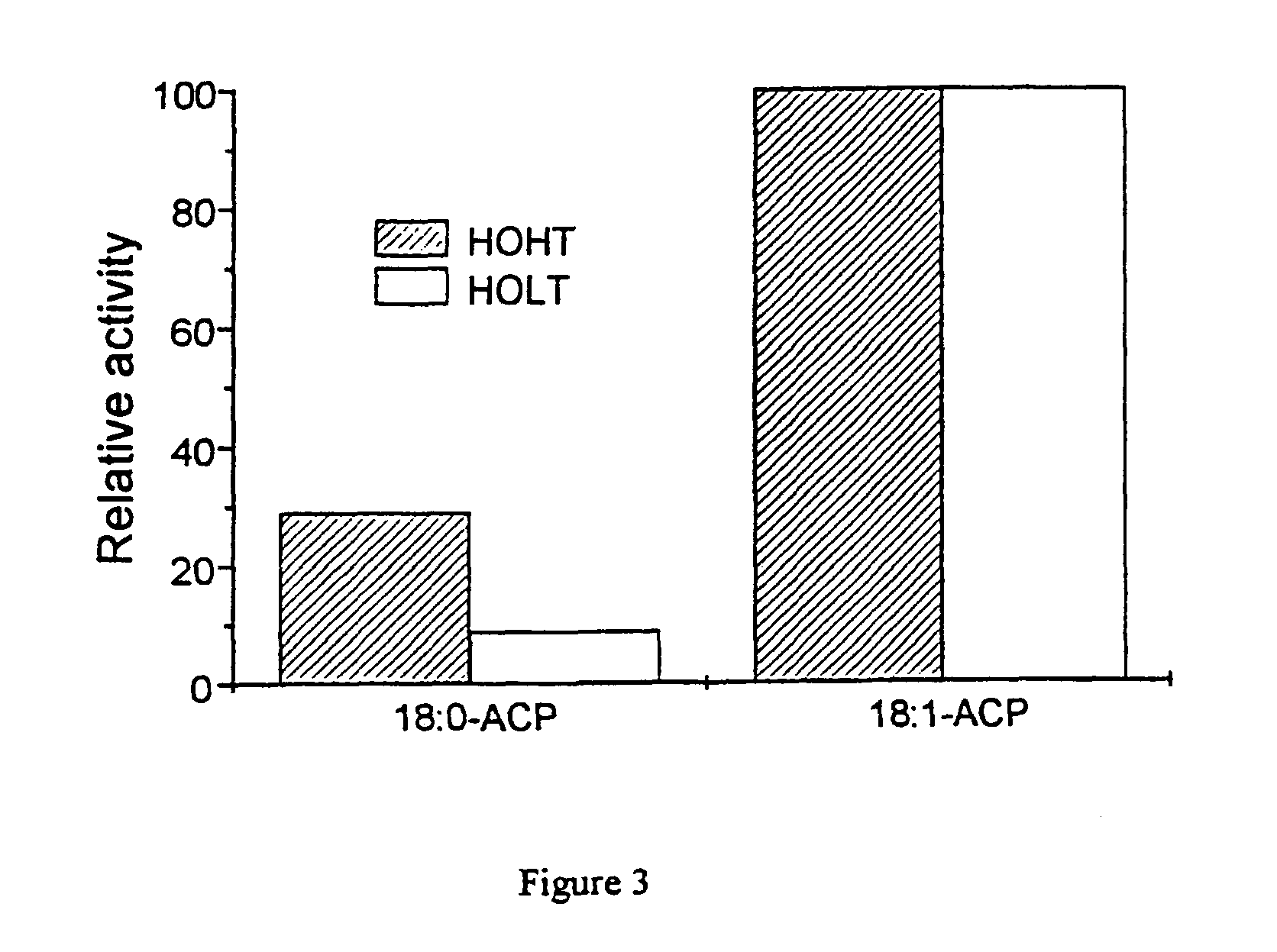High oleic high stearic plants seeds and oils
a high stearic plant, high oleic technology, applied in the field of high stearic high stearic plant seeds and oils, can solve the problems of raising the bad form of serum cholesterol, not all fats are unhealthy, and the actual available fats are not good options
- Summary
- Abstract
- Description
- Claims
- Application Information
AI Technical Summary
Benefits of technology
Problems solved by technology
Method used
Image
Examples
example 1
Preparation of a HS Line
1. Mutation with EMS
[0085]Seeds were mutagenised with a solution of 70 mM of ethyl methane sulfonate (EMS) in water. The treatment was performed at room temperature during 2 hours while shaking (60 rpm). After mutagenesis the EMS solution was discarded and seeds were washed during 16 hours under tap water.
[0086]Treated seeds were germinated in the field and plants were self-pollinated. The seeds collected from these plants were used to select new sunflower lines with modifications in the fatty acid composition. By using the method of Garcés, R. and Mancha, M. ((1993) Anal. Biochem. 211, 139–143) the seed fatty acid composition was determined by gas liquid chromatography, after converting the fatty acids into their corresponding methyl esters.
[0087]A first plant with 9 to 17% stearic acid content in the oil was selected. The progeny was cultivated for five generations wherein the stearic acid content increased and the new genetic trait became stably fixed in t...
example 2
Production of a HSHO Line
1. General
[0092]Sunflower plants were grown from the sunflower seeds of the HOHT line, seeds of which are on deposited at ATCC (PTA-628). Sunflower plants were also grown from the sunflower seeds of CAS-3. The lines were crossed. The plants were assisted by artificial pollination in order to ensure adequate seed production occurred. The F1 seed was produced on the HOHT line, or vice versa, and harvested. The F2 seeds with more than 20% stearate and more than 40% oleate were selected. Although this produces the oil of the present invention the level of production is limited.
[0093]Therefore fixed inbred lines evidencing seeds with these oil profiles are desirable. These homozygous fixed inbred HSHO lines can then be crossed to form hybrid seed, which will produce F2 seed evidencing the desired oil traits of the present invention.
[0094]Toward this end the F1 seeds were planted and produced plants were selfed in isolated conditions and F2 seed was produced. The ...
PUM
| Property | Measurement | Unit |
|---|---|---|
| wt % | aaaaa | aaaaa |
| wt % | aaaaa | aaaaa |
| wt % | aaaaa | aaaaa |
Abstract
Description
Claims
Application Information
 Login to View More
Login to View More - R&D
- Intellectual Property
- Life Sciences
- Materials
- Tech Scout
- Unparalleled Data Quality
- Higher Quality Content
- 60% Fewer Hallucinations
Browse by: Latest US Patents, China's latest patents, Technical Efficacy Thesaurus, Application Domain, Technology Topic, Popular Technical Reports.
© 2025 PatSnap. All rights reserved.Legal|Privacy policy|Modern Slavery Act Transparency Statement|Sitemap|About US| Contact US: help@patsnap.com



